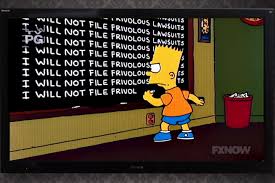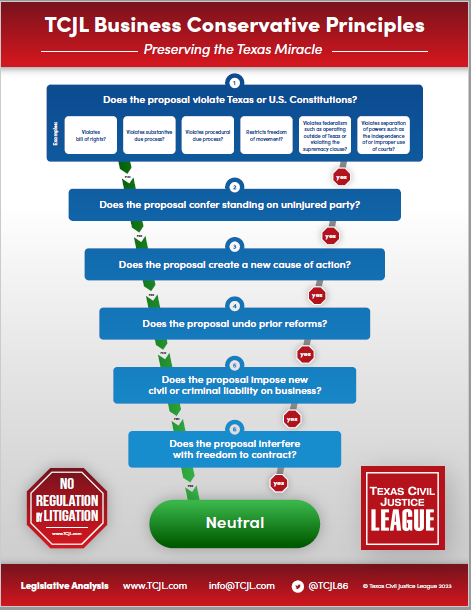 The Tyler Court of Appeals has reaffirmed its disavowal of the “zero damages rule” in upholding a jury verdict that rejected a plaintiff’s claim for $400,000 in non-economic damages for a minor car accident.
The Tyler Court of Appeals has reaffirmed its disavowal of the “zero damages rule” in upholding a jury verdict that rejected a plaintiff’s claim for $400,000 in non-economic damages for a minor car accident.
Albert Hambrick v. Foremost County Mutual Insurance (No. 12-23-00133-CV; April 17, 2024) resulted from an accident in which a hit and run driver struck the driver’s side of Plaintiff’s vehicle. Plaintiff was insured under a policy issued by Defendant, which included uninsured motorist coverage. Plaintiff filed a declaratory judgment action against Defendant alleging the other driver’s negligence and seeking damages, attorney’s fees, interest, and costs. The parties stipulated that Defendant paid Plaintiff’s policy limits on his PIP coverage, the hit and run driver’s negligence proximately caused the accident, and that Defendant believed that Plaintiff was injured. Consequently, the sole issue submitted to the jury was Plaintiff’s damages. Plaintiff’s attorney argued that the jury should award his client $400,000 for past and future physical pain and mental anguish and past and future physical impairment. Unimpressed, the jury awarded zero damages. The trial court signed a take-nothing judgment in Defendant’s favor. Plaintiff appealed.
In an opinion by Chief Justice Worthen, the court of appeals affirmed. The sole issue before the court was the factual sufficiency of the evidence supporting the jury’s zero damages verdict. First, the court reviewed the jurisprudence that has grown up around the “zero damages rule,” which provides that in cases involving unliquidated damages, the jury must award something for every element of damage “proved,” or else the case will be remanded for a new trial. In Pool v. Ford Motor Co., 715 S.W.2d 629 (Tex. 1986), however, SCOTX held that an appellate court that concludes that the evidence was factually sufficient should “detail the evidence relevant to the issue in consideration and clearly state why the jury’s finding is factually insufficient or is so against the great weight and preponderance as to be manifestly unjust; why it shocks the conscience; or clear demonstrates bias.” As a result of Pool, the zero damages rule subsequently came under attack in an influential article authored by former SCOTX Justice Raul Gonzalez and Rob Gilbreath [Appellate Review of a Jury’s finding of “Zero Damages”, 54 Tex.B.J. 418 (May 1991)], which opined that the rule was inconsistent with Pool because “it circumvents the requirement that, in order to reach the conclusion that the jury’s finding is against the great weight and preponderance of the evidence, the court must expressly determine that the finding is manifestly unjust, shocks the conscience, or clearly demonstrates bias.” As the court pointed out, this article resulted in a number of intermediate appellate courts criticizing the zero damages rule and rejecting its strick application (citations omitted). SCOTX has since reaffirmed Pool, while not explicitly abandoning the no evidence rule (Golden Eagle Archery, Inc. v. Jackson, 116 S.W.3d 757 (Tex. 2003)). (It should be noted that in Golden Eagle, Justice O’Neill advocated for the express disavowal of the rule.)
In view of this history, the court decided to reaffirm its rejection of the rule in a 1997 decision. It held that “regardless of whether an injury is objective or subjective, we review the factual sufficiency of the evidence by weighing all of the evidence and determining whether the jury’s finding of zero damages is so contrary to the evidence as to be manifestly unjust” (citations omitted). Turning back to the case, the court rejected Plaintiff’s argument that since the parties stipulated that he was injured in the accident and he testified as to his pain and suffering, the jury had to find that he suffered at least some compensable pain and impairment. Rather, the court observed, “[w]hen the evidence of pain is conflicting, scant, or more subjective than objective, appellate courts are generally reluctant to determine that a jury’s finding of zero damages is contrary to the great weight and preponderance of the evidence.” Moreover, it is the jury’s province to credit or reject plaintiff’s testimony about “the existence, amount, or severity of pain,” even if “there is uncontroverted evidence that the plaintiff sustained some injury”—particularly in the case, as here, of “back and neck soft-tissue injuries.”
Turning to the evidence, the court found that the “jury could reasonably conclude that although the parties stipulated that the accident injured [Plaintff], he did not suffer compensable pain, mental anguish, or physical impairment as a result of the accident” (much less the $400,000 he claimed). Instead, the evidence showed that: (1) Plaintiff had numerous pre-existing conditions of the same type he alleged were caused by the accident; (2) photos of his damages truck showed minor damage from a low-speed collision; (3) objective medical tests (MRI, x-ray, EMG) performed after the accident showed that Plaintiff had chronic and degenerative conditions, not acute injuries; (4) Plaintiff tried to obtain social security disability benefits two years before the accident based on the same type of injuries he alleged were caused by the accident; (5) Plaintiff continued to work on his farm and in his barbecue business after stating on his disability benefit applications that he could no longer work; (6) according to the defense expert, Plaintiff suffered from a cervical and lumbar sprain caused by the accident, which could treated by six to eight weeks of chiropractic care (although Plaintiff ran up the bill by going to the chiropractor 85 times before being referred to a physician); (7) no expert witness testified that Plaintiff’s accident caused any subsequent pain, mental anguish, or impairment; and (8) medical staff who treated Plaintiff for pain testified that although he claimed that his pain was an “8, 9, or 10,” he didn’t look like he was in any pain at all during those visits. The court thus affirmed the zero damages judgment.
Both the trial court and court of appeals saw through this case for what it was: an egregious money grab. We appreciate the insurer for seeing it, too, refusing to settle, and litigating all the way through verdict and appeal.












